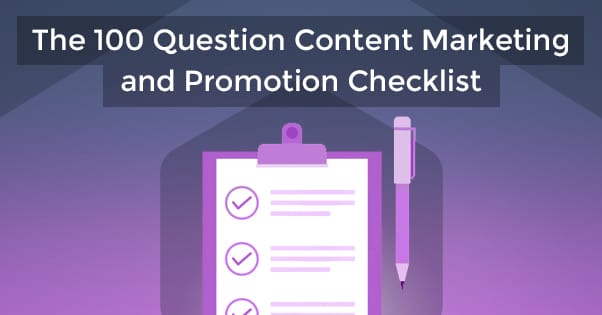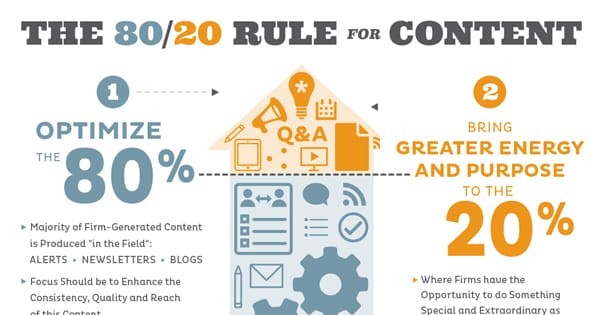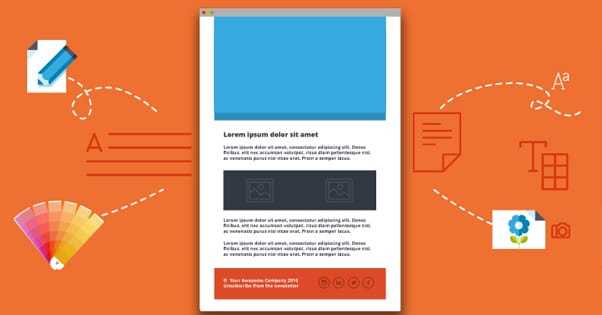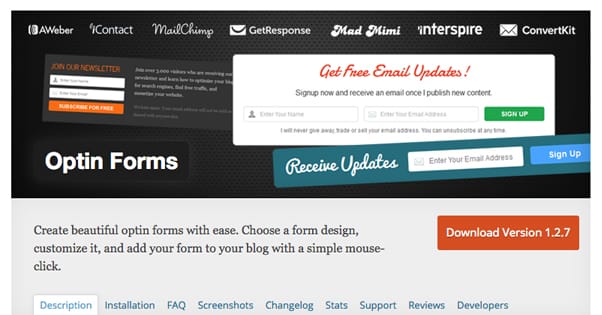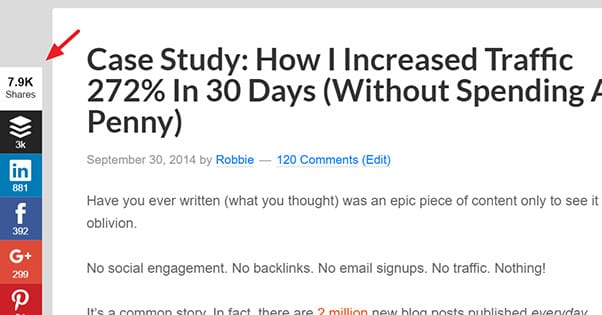The 100 Question Content Marketing and Promotion Checklist
Published by James Parsons • Content Marketing • Posted October 27, 2016 ContentPowered.com
ContentPowered.com
Producing a piece of content can be a lengthy process, fraught with obstacles, and it can feel great to finally get one done that’s up to your standards. Once you get the process down, of course, you can pump them out quite quickly, but it takes a lot of practice to get to that point.
The battle isn’t over once you’ve written your post, though. In fact, in some ways, it has only just begun. What do you do now? You publish it, obviously, but then what? Do you promote it? On what venues? How do you create posts? Do you pay for ads? There are a ton of questions you need to answer along the way.
Luckily for you, I’ve put together this list of questions you can use as a checklist for the promotion process. Start when you’ve finished a post, and run through this for every post until it becomes second nature.
Oh, and don’t get disheartened if you put a lot of effort into a piece of content and it doesn’t do much for you. Remember the 80-20 rule. 80% of your traffic is going to come from 20% of your content, the rest of the content is filler. Some people will find it useful, and it has SEO value to boost your site as a whole, but only a small fraction of your content is going to be flagship content. You have no way of knowing which pieces of content will and won’t be flagship, however, so you have to put the same amount of effort into promoting every piece.
I have one primary question you should ask yourself before we even begin with the list, though it certainly counts.
- 1. Does your content solve a problem or fill a need?
Most queries performed online have a need behind them. The user needs to find out some information. Maybe it’s just to sate their curiosity. Maybe it’s to find directions. Maybe it’s to find a step by step tutorial for performing a task. All content needs to fill a need or solve a problem for a user, or else no one will have reason to seek it out.
Onsite Optimization
The first thing you should look at is the format of your post itself. Start where your readers are going to start; with the title of the post itself.
- 2. How does your headline address your audience? Is it calling them to action, enticing them with information? It needs to appeal to people with the problem it solves.
- 3. Can your audience related to the problem? There needs to be an intersection between your target audience and the people who your title appeals to.
- 4. Is your headline sharable? A short, catchy headline is generally better than a longer, more informative headline simply because people can share it more easily.
- 5. Does your headline tickle curiosity? Explore the ideas of the curiosity gap. There’s a reason why clickbait works.
- 6. Does your headline convey an emotion or sentiment? People respond better to headlines that have some emotional slant to them.
- 7. Does your headline adequately convey what the user will see within your post? There needs to be continuity between headline and content, the same way you need continuity between post and advertising.
- 8. Does your headline effectively lead in to the intro paragraph and further subheadings? Most readers will skim the first paragraph and skip down through the subheads looking for indications of where they can get the specific factoid they need. Make it as easy as possible for them to find what they need. Satisfaction is better than time spent on site.
Speaking of subheadings, they’re next up on the block.
Thankfully, it’s easy to edit just about any post to add, remove, or change subheads without substantially altering the content. Make what changes to you need to as you ask yourself these questions.
- 9. Does each subheading throughout the post lead from the previous point and tie into the next? Articles need a certain amount of flow, and having subheadings act as ties from one section to the next is the way to do it.
- 10. Do you have enough subheadings? Your content should be broken up into easily digestible chunks, bite size pieces, so to speak. Subheads are one way to do this, as are bullet points.
- 11. Do your subheadings give people a place to scan and “drop in” to read exactly what they want without having to filter out a lot of less relevant content?
Next up: let’s talk about content. I know, you spent a lot of work writing, researching, and putting together the content you created. That’s fine, that’s great! Now it has to stand up to scrutiny.
If you can’t answer these questions, you have to step back and figure out why not. This isn’t a pithy political debate where deflecting and going back to stock talking points will work. People pay attention here.
- 12. Does your introduction reiterate that you understand what problem your readers are facing? You should establish empathy here; you know the problem because you experience it as well. They aren’t alone, they can rely on you for a solution.
- 13. Is your writing in general simple, emotional, and easy to read? Internet readers don’t like dense prose. You don’t need to go all the way into reading level analysis, but avoid going too deep with jargon and $10 words.
- 14. How many buzzwords and pieces of jargon do you use? A little is fine, but remember that your audience will come from a wide range of backgrounds, many of whom won’t know what all the words mean.
- 15. Do you carry through the continuity of your headline into your introduction? Remember; continuity is important.
- 16. Is the primary value of your content available to your audience for free? Some sites try to use social lockers or paid memberships to hide the real value, and all that does is keep people from using your site; they go elsewhere.
- 17. Do you recognize what emotion your content is evoking? You don’t necessarily need deep emotion from a tutorial or case study, but recognizing the potential is still valuable.
- 18. Is there an easy path for reader to engage with your content? By this, I mean hooks and questions for your readers to answer, not the specific location they can use to make that answer.
- 19. Does the information in your content come from a source of authority that your target audience can believe? If they don’t trust you, do you have an informational name they can trust behind your content?
- 20. Does the information in your content correspond with what your audience knows and experiences? You can elicit trust inherently without an authoritative name, so long as you’re not triggering skepticism in your audience.
- 21. Do you use scarcity to enhance your content? In some cases, you can deliberately under-explain fringe topics in order to link to other articles where you more fully explain them.
- 22. Do you lace your content with subtle calls to action? At any given time, regardless of where a user stopped skimming and started reading, they should be able to see a CTA telling them what to do next.
- 23. Does your content actually address the problem you claim to address? Will your readers be able to walk away further informed, or with the solution to their problems?
- 24. Does your offered solution to the users’ problem involve your own products or services? You are, after all, encouraging people to make use of your brand. In cases where the problem isn’t one you can solve, do you recommend a partner or mutually beneficial service?
- 25. Do you take the time to explore bias and existing information, to refute common knowledge or offer an opposing perspective before explaining why your chosen path is superior?
- 26. Is the tone of your content personal and casual? Do you speak directly to your audience, or do you speak “above” them? People like to feel as though they are having a one on one conversation with the author.
- 27. Does the tone of your article match the tone of your brand? Some brands are more casual than others, so make sure you fit your brand as much as you fit your audience.
- 28. Does the content end on a note that summarizes the emotional ideal you were attempting to express? Ending a hopeful piece on a dejected note, or a contrarian piece on an agreeable note, can diminish the whole thing.
- 29. Does the content end with a strong call to action, so anyone reading it through knows exactly what you want them to do next? Try not to dilute it by offering several weaker CTAs.
- 30. Does the post generate discussion? Reminding users of the questions you asked along the way, and enticing them to comment their responses, is a good way to get more engagement on your content.
- 31. Do you summarize your content in full? If people can simply read the concluding paragraph and get all the value of your post, you may want to adjust things to encourage readers to go back and read more.
While we’re still on the topic of content, let’s take a moment to look at the technical aspects of the content, and of the site that surrounds it.
After all, good content leads users to browse more content, and is built to be shared.
- 32. Is your content properly formatted for the web?
- 33. Are your paragraphs short and “light” so they don’t drive users away?
- 34. Have you included images? Are those images legal for you to use?
- 35. Are your images aligned with the emotional concepts you’re portraying?
- 36. Have you included any other visual media, and if so, does it match the content?
- 37. Do you have internal links built into the text of your article?
- 38. Is your content of sufficient length to avoid Panda and related penalties?
- 39. Have you mentioned or linked to industry influencers in your content?
- 40. Did you get any influencers involved directly with your content creation process, such as with an interview or a direct Q&A?
- 41. Did you cite all of your sources properly, with in text links or with footnotes?
- 42. Does your site have prominent, easy to use social sharing buttons?
Offsite Marketing
No matter how much time and effort you put into your content and your website, you can’t do a thing without offsite marketing. There’s no “if you build it they will come” in effect here. You need to go out of your way to put your content in front of people, in as many different ways as you can without crossing the line into spam.
The next series of questions are all about sharing your content or adapting that content into other forms that themselves can be shared.
- 43. Do you have a regular mailing list or content digest? If so, promote your content through it.
- 44. Have you found any industry content aggregators that might share your content? If so, submit it as a tip to them.
- 45. Have you identified other sites where your readers visit? If so, strive to guest post or contribute to them.
- 46. Have you left comments on blogs relating to your content? You can rarely drop in with a link and no explanation, but there is still a viable blog commenting strategy out there.
- 47. Do you have any older content that is still relevant that you can share and link to in your new content?
- 48. Are you a part of any industry communities, forums, or groups that you can submit your content to without violating rules?
- 49. Have you reached out to the people you link to in your post via Twitter, to notify them of your new link?
- 50. Have you optimized your content for specific keywords, to get that extra bit of SEO juice out of them?
- 51. Have you filled out the meta tags necessary to appear properly in the Facebook preview and the Twitter card?
- 52. Have you studied the active hours of your users on the relevant sites, so you can publish and share your content at the right time for maximum exposure?
- 53. Is your content part of a larger theme that you can use to tie together a week’s worth of content, or different content throughout different locations?
- 54. Do you have ample opportunity for your readers to jump from your content to a conversion of some kind, and do you have tracking in place to see when it happens?
- 55. Are you posting a weekly digest of your best content, either on social media or as a round-up on your blog? What about monthly?
All of that is about sharing the content you created as-is. However, you can also get some additional traction by repurposing, revamping, and re-creating the content in new forms for new locations.
Here are some ideas, in the form of questions.
- 56. Can you convert your post into a script for a video that you can post to sites like YouTube or Vimeo?
- 57. Can you convert your post into a script (or your video into audio) that you can post as a podcast to aggregators like iTunes?
- 58. Can you break up your video or your post into discrete chunks and upload it as a slidedeck to a site like SlideShare?
- 59. Can you expand upon your content to create something of exceptional length and quality, to sell as an eBook on Amazon or through your site?
Alright, what about the specific places you can share your content? I know it can be tough to establish and maintain a presence on a variety of different social networks, so don’t feel as though you absolutely need to do all of the below.
Pick the ones most relevant to your brand and expand slowly from there. Remember; a good, consistent presence on three networks is better than a spotty, minor presence on ten.
- 60. In general, when you post your content to social media, do you schedule it for reposting down the line? Most sites can support more than one iteration of a post, though the frequency will depend on the site.
- 61. In general, when you post your content to social media, do you stick around to answer questions and encourage engagement with your audience?
- 62. In general, are you timing your social network posts to coincide with the peak active hours of your audience?
- 63. Have you optimized your excerpts, quotes, and descriptions for your posts on social media to get the most exposure and clicks?
- 64. Have you examined each of the major social networks to find the ones that are most suitable for your brand? Believe it or not, Facebook might not be the best for every business.
- 65. Are you using hashtags for the social networks that like them (Twitter, Instagram) and avoiding them on sites that don’t (Facebook, Reddit)?
- 66. Are you using unique snippets and quotes on each social network? Try to avoid posting the same thing to multiple sites, as it looks like a robot shared it.
- 67. Do you tag or mention your sources or influencers when you post and share your content?
- 68. Are you uploading your videos you YouTube?
- 69. Are you uploading your videos separately to Facebook directly?
- 70. Are you creating teasers of your videos for Twitter, Vine, or Instagram?
- 71. Are you promoting your Facebook content via organic posts?
- 72. Are you promoting your Facebook content via paid advertising, either with your own audience or with a lookalike audience?
- 73. Are you promoting your content on Google+, LinkedIn, and other “tertiary” networks?
- 74. Are you promoting your content on Twitter, Instagram, Facebook, and other primary networks?
- 75. Are you participating in groups on Google, Facebook, and LinkedIn
- 76. Are you participating (not just sharing your own content) on Reddit, to build yourself up as a valuable account?
- 77. Are you participating in industry events, such as Reddit AMAs or Twitter Chats?
Those are the major points to hit, and should be hit for the majority of your content. However, sometimes you want to dig in deeper with certain pieces of content.
Maybe you know it’s going to be a flagship post and you want to push it as hard as you can, or maybe you just need to outrank a strong competitor and want to invest heavily in promotion. Regardless, here are more options to consider.
- 78. Are you studying those who share content similar to your own via BuzzSumo and targeting them for outreach?
- 79. Are you curating your content in the form of a newspaper or magazine with a site like Paper.Li?
- 80. Are you monitoring social influencers and looking for opportunities using tools like Viral Content Buzz?
- 81. Are you creating easily sharable bytes using a plugin like Click to Tweet?
- 82. Are you sending personalized messages to influencers who you think might be interested in your content, via email, since social direct messages are liable to be lost or handled by an intern?
- 83. Are you sending direct messages the influencers whose support would be useful but aren’t necessarily worth direct email outreach?
- 84. Are you looking for similar content already published, finding people who linked to it, and pointing out your better content to them?
- 85. Are you creating ads on native advertising services like Taboola, or on traditional advertising services like Google AdWords?
- 86. Are you submitting your content to mutual sharing communities like BizSugar or Triberr?
- 87. Are you tracking your visitors with conversion pixels from Google and Facebook, for future remarketing?
- 88. Are you making use of remarketing pixel tracking to promote your content via paid ads on those services?
- 89. For your best content, are you sending out press releases to a few targeted sites? Broad-spectrum press releases don’t work, but targeted notifications still can.
- 90. Are you promoting yourself in general through services like Help A Reporter Out?
- 91. Are you building your brand in ways beyond marketing individual pieces of content, such as through print advertising or event sponsorship?
- 92. Are you running contests that draw people into your audiences, where they can be exposed to the rest of your marketing engine?
- 93. Are you filling your Twitter, Facebook, and other social feeds with curated content to minimize the spammy aspects of nothing but self-promotion?
- 94. Are you monitoring your site statistics with Google Analytics or a third party tool like Raven Tools, for extensive insight?
- 95. Are you monitoring your social performance on Facebook with Facebook Insights?
- 96. Are you using third party analysis tools on Twitter, like Twitonomy?
- 97. Are you checking and snapshotting your metrics through general link analysis tools like Majestic or Moz?
- 98. Are you taking advantage of opportunities and connections offered when influencers or potential partners comment on your content?
- 99. Are you keeping a list of the influencers who are most frequently sharing your content, and the results that come of those shares?
- 100. Are you using additional tools like Google’s UTM parameters for as much information tracking as you can get?
I will admit; a large portion of this list is not much to go on. Each question has behind it the potential for an entire article dedicated to that topic. We’ve written many such articles, so please; explore the site and find the help you need. If we haven’t covered a topic, let us know so we can put it on the list.
